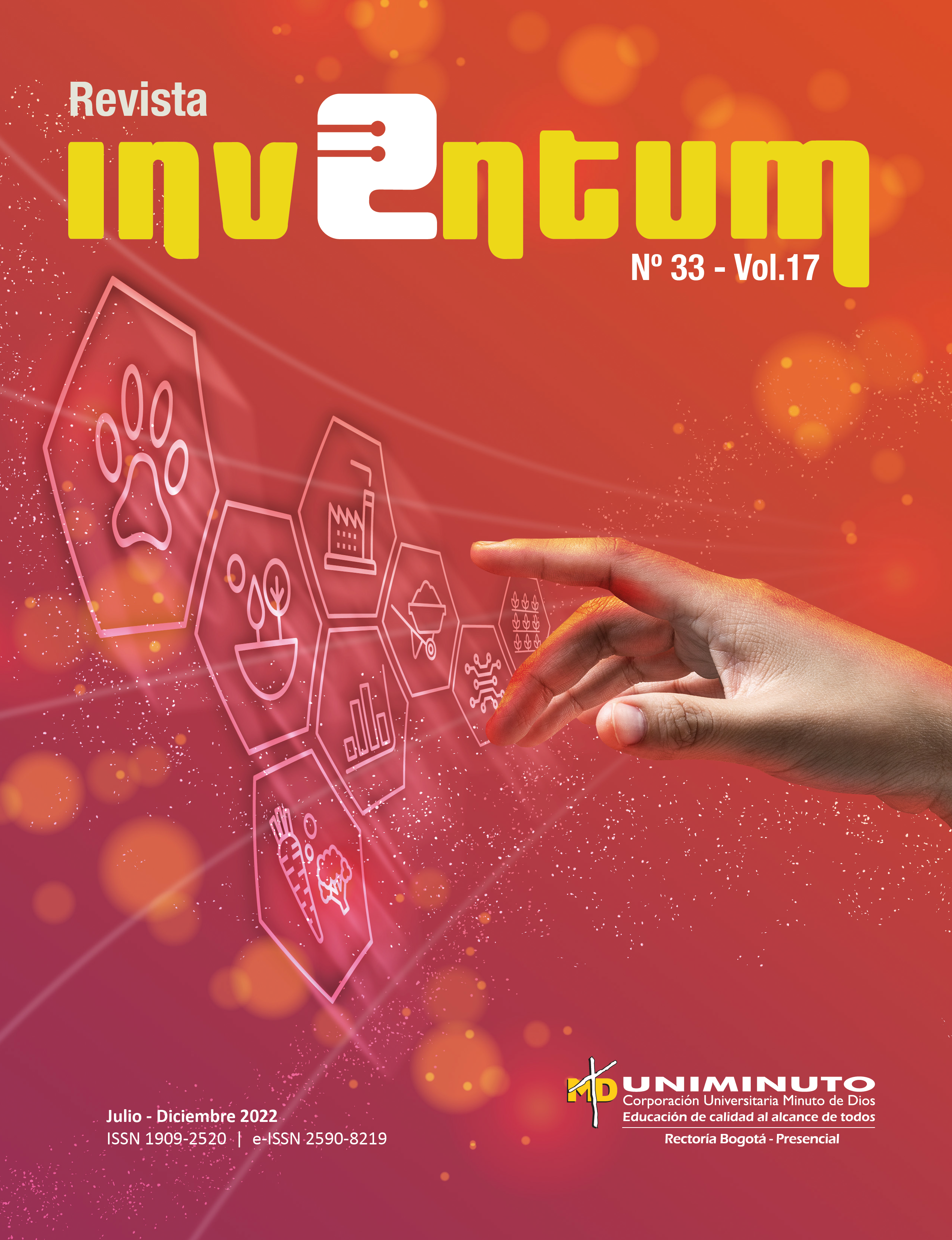Factores clave para el éxito de ciudades inteligentes y sostenibles: una revisión sistemática de la literatura
Contenido principal del artículo
Resumen
Una ciudad inteligente (smart city) incorpora herramientas tecnológicas para la optimización de infraestructuras, de la movilidad, el medio ambiente y demás factores que influyen en la calidad de vida. El propósito de este artículo es analizar, a partir de la literatura, los factores clave para el éxito de las ciudades inteligentes a nivel mundial enfocadas en el desarrollo sostenible. Se consultaron bases de datos con renombre en la comunidad científica, teniendo como premisa la pregunta de investigación planteada, con el fin de recolectar la mayor cantidad de información acerca del objeto de estudio para luego filtrarla y analizarla a través de una matriz metaanalítica con datos de interés establecidos. Con base en los resultados de la investigación, se infiere que, si bien la ciudad inteligente es un tema relativamente nuevo, existen recursos suficientes para crearlas, no solo automatizadas, sino de manera que también cumplan las demandas del desarrollo sostenible.
Detalles del artículo
Sección

Esta obra está bajo una licencia internacional Creative Commons Atribución 4.0.
Se solicita a los autores que diligencien el documento de cesión de derechos de autor sobre el artículo, para que sea posible su edición, publicación y distribución en cualquier medio y modalidad: medios electrónicos, CD ROM, impresos o cualquier otra forma, con fines exclusivamente científicos, educativos y culturales
- La obra pertenece a UNIMINUTO.
- Dada la naturaleza de UNIMINUTO como Institución de Educación Superior, con un modelo universitario innovador para ofrecer Educación de alta calidad, de fácil acceso, integral y flexible; para formar profesionales altamente competentes, éticamente responsables y líderes de procesos de transformación social, EL CEDENTE ha decidido ceder los derechos patrimoniales de su OBRA, que adelante se detalla para que sea explotado por ésta
- El querer de EL CEDENTE es ceder a título gratuito los derechos patrimoniales de la OBRA a UNIMINUTO con fines académicos.
Cómo citar
Referencias
T. Yigitcanlar et al., “Understanding ‘smart cities’: Intertwining development drivers with desired outcomes in a multidimensional framework”, Cities, vol. 81, pp. 145–160, nov., 2018, doi: 10.1016/j.cities.2018.04.003.
A. Ghaffarianhoseini, N. D. Dahlan, U. Berardi, A. Ghaffarianhoseini, N. Makaremi, y M. Ghaffarianhoseini, “Sustainable energy performances of green buildings: A review of current theories, implemen-tations and challenges”, Renew. Sustain. Energy Rev., vol. 25, pp. 1–17, 2013, doi: 10.1016/j.rser.2013.01.010.
M. Tan, “Creating the digital economy: Strategies and perspectives from Singapore”, Int. J. Electron. Commer., vol. 3, n.º 3, pp. 105–122, ago. 1999.
L. Čablová, R. Pates, M. Miovský, y J. Noel, “How to write a systematic review article and meta-analysis”, en, Publishing Addiction Science, T. Babor et al. eds. London: Ubiquity Press., 2017, pp. 173–189, , doi: 10.5334/bbd.i.
S. El Khateeb, “IoT architecture a gateway for smart cities in Arab world”, 2018 15th Learn. Technol. Conf., pp. 153–160, doi: 10.1109/LT.2018.8368500.
J. Macke, R. M. Casagrande, J. A. R. Sarate, y K. A. Silva, “Smart city and quality of life: Citizens’ perception in a Brazilian case study”, J. Clean. Prod., vol. 182, pp. 717–726, may. 2018, doi: 10.1016/j.jclepro.2018.02.078.
E. Ismagilova, L. Hughes, Y. K. Dwivedi, y K. R. Raman, “Smart cities: advances in research—An information systems perspective”, Int. J. Inf. Manage., vol. 47, pp. 88–100, ago. 2019, doi: 10.1016/j.ijinfomgt.2019.01.004.
H. Yeh, “The effects of successful ICT-based smart city services: From citizens’ perspectives”, Gov. Inf. Q., vol. 34, n.º 3, pp. 556–565, sep. 2017, doi: 10.1016/j.giq.2017.05.001.
A. Kramers, J. Wangel, y M. Höjer, “Planning for smart sustainable cities”, en Proc. 2014 Conf. ICT Sustain., ago. 2014, pp. 299–305.
S. Joshi, S. Saxena, T. Godbole, y Shreya, “Developing Smart Cities: An Integrated Framework”, Procedia Comput. Sci., vol. 93, pp. 902–909, sep. 2016, doi: 10.1016/j.procs.2016.07.258.
R. Mahesa, G. Yudoko, y Y. Anggoro, “Platform ecosystems for Indonesia smart cities”, en 2018 Int. Conf. Comput. Control. Informatics its Appl. Recent Challenges Mach. Learn. Comput. Appl. (IC3INA), nov. 20182018 - Proceeding, pp. 34–39, doi: 10.1109/IC3INA.2018.8629537.
United Nations, 2018 “Revision of World Urbani-zation Prospects”, Department of Economic and Social Affairs. [En línea]. Disponible: https://www.un.org/development/desa/publications/2018-revision-of-world-urbanization-prospects.html
The World Bank, “Urban Population, 2021”. The World Bank: Data. [En línea]. Disponible: https://data.worldbank.org/indicator/SP.URB.TOTL?end=2021&start=1960&view=chart
E. Cosgrave, T. Tryfonas, y T. Crick, “The smart city from a public value perspective”, en Proc. 2014 Conf. ICT Sustain., ago. 2014, pp. 369–377, 2014, doi: 10.2991/ict4s-14.2014.45.
M. Gargiulo et al., “An integrated planning fra-mework for the development of sustainable and resilient cities―The case of the InSMART Project”, Procedia Eng., vol. 198, , pp. 444–453, ene. 2017, doi: 10.1016/j.proeng.2017.07.099.
J. Zhang, C. Wang, y X. Chen, “Innovative and smart city: A theoretical study of adaptive solutions for sustainable solar urban districts”, E3S Web Conf., vol. 79, 2019, doi: 10.1051/e3sconf/20197903011.
C. Martin, J. Evans, A. Karvonen, K. Paskaleva, D. Yang, y T. Linjordet, “Smart-sustainability: A new urban fix?”, Sustain. Cities Soc., vol. 45, pp. 640–648, 2019, doi: 10.1016/j.scs.2018.11.028.
V. Marchal et al.,. Environmental Outlook to 2050: Chapter 3: Climate change. OECD, 2011, p. 5.
F. Mosannenzadeh, A. Bisello, R. Vaccaro, V. D’Alonzo, G. W. Hunter, y D. Vettorato, “Smart energy city development: A story told by urban planners”, Cities, vol. 64, pp. 54–65, abr. 2017, doi: 10.1016/j.cities.2017.02.001.
A. Adonina, E. Akhmedova, y A. Kandalova, “Realization of smart city concept through media technology in architecture and urban space: From utopia to reality”, MATEC Web Conf., vol. 170, 2018, doi: 10.1051/matecconf/201817002013.
J. Lloret, S. Sendra, P. L. González, y L. Parra, “An IoT Group-Based Protocol for Smart City Interconnection”, Commun. Comput. Inf. Sci., vol. 978, pp. 164–178, feb. 2019, doi: 10.1007/978-3-030-12804-3_13.
Programa de las Naciones Unidas para el Desarrollo, “Objetivos de Desarrollo Sostenible” Los ODS en Acción. [En línea]. Disponible: https://www.undp.org/es/sustainable-development-goals





